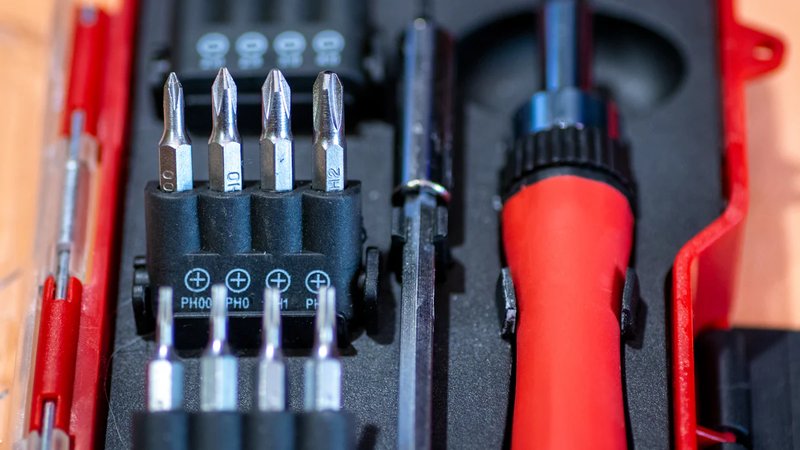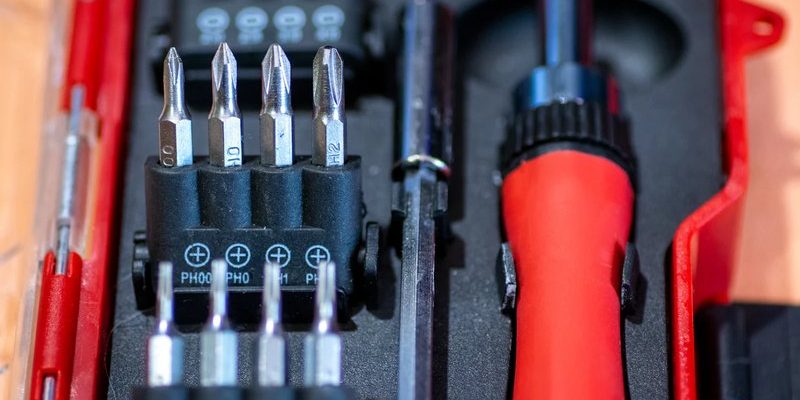
Let’s face it: door hardware can be tricky. Whether you’re fixing a squeaky hinge or replacing a doorknob, having the correct screwdriver makes a world of difference. With so many types out there—from Phillips to flathead to Torx—it’s easy to get overwhelmed if you’re new to this. But don’t worry! I’m here to break it all down for you, just like a friend would over coffee.
Understanding Different Screwdriver Types
Before diving into what screwdriver you need, it’s important to understand the main types used in door hardware. Different screws require different screwdrivers, and using the wrong one can lead to a slew of issues.
1. Flathead Screwdrivers: These are the classic, simple screwdrivers with a flat edge. They work on screws that have a single horizontal slot. Ideal for older door hardware, a flathead can often be found in vintage home improvements.
2. Phillips Screwdrivers: This type has a cross-shaped tip, which allows for a better grip on the screw. These are common in modern door hardware. If you’re ever in doubt, reach for a Phillips—it fits many standard screws used in doorknobs and hinges.
3. Torx Screwdrivers: If you see a star-shaped screw, grab your Torx screwdriver. Often found in newer hardware, including some electronic door locks, they provide excellent torque and help prevent stripping.
4. Allen Wrenches: Sometimes, you’ll encounter screws that take an Allen wrench. These are often used in contemporary hardware, especially in furniture-like doorknobs. Grab an Allen wrench set to ensure you’re ready for any situation.
Understanding these types will help you choose the right one for your door repair project.
Choosing the Right Size
Now that you know the different types of screwdrivers, let’s talk about size. A screwdriver that’s too small or too large can lead to stripped screws—a nightmare for anyone trying to do repairs.
1. Check the Screw Size: Take a close look at the screws you’ll be working with. They usually come in standard sizes. If you have a variety of screw sizes, consider a set that includes multiple sizes of the same type.
2. Use a Screwdriver with the Right Fit: The screwdriver should fit snugly into the screw head. It should neither wobble nor require excessive force to turn. If it doesn’t fit, it might be time to search for a different size.
3. Tips for Measurement: If you’re unsure, measure the screw head with a ruler or compare it to a sizing chart. This can help you determine which screwdriver will work best.
Choosing the correct size is just as essential as choosing the right type. It saves you time and frustration down the road.
Material Matters
Believe it or not, the material of the screwdriver can affect your repair experience. Let’s explore the common options.
1. Steel vs. Chrome Vanadium: Most screwdrivers are made from steel, which is durable and long-lasting. Chrome vanadium screwdrivers are often stronger, which means they can handle more torque without bending or breaking.
2. Magnetic Tips: Some screwdrivers come with magnetic tips, making it easier to hold onto screws while you’re working. This is especially handy when you’re dealing with tight spaces, like when you’re fixing a door handle.
3. Ergonomic Handles: Comfort is key, especially during longer jobs. Look for screwdrivers with rubberized or cushioned handles. They provide a better grip and reduce hand fatigue as you work.
When selecting a screwdriver, don’t overlook the material. It can make a significant difference in your repair process.
Price and Quality Considerations
While it might be tempting to grab the cheapest option on the shelf, investing in a higher-quality screwdriver pays off in the long run. Here’s why:
1. Longevity: Higher-quality screwdrivers last longer, meaning you won’t have to replace them as often. A well-made screwdriver can become a trusty tool in your toolbox for years.
2. Performance: Cheap screwdrivers often lack the precision and durability of higher-end tools. This can lead to frustration as you struggle to get the job done.
3. Brand Reputation: Look for well-known brands that are recognized for their quality. Brands like Craftsman, DeWalt, or Klein Tools have solid reputations for making reliable tools.
In the end, spending a little more now can save you time and money later.
Tips for Door Hardware Repair
Now that you have your screwdriver sorted out, let’s dive into some helpful tips for repairing door hardware.
1. Use the Right Technique: When inserting or removing screws, apply gentle and consistent pressure. This helps prevent stripping and allows for smoother operation.
2. Keep Your Workspace Organized: A clutter-free workspace helps you focus on the task at hand. Use small containers to keep screws and parts organized while you work, so you don’t lose anything.
3. Check for Other Issues: Sometimes, problems are deeper than just loose screws. If your door isn’t closing properly, check for alignment issues or inspect the hinges.
4. Be Patient: Repairs can sometimes take longer than expected. Take your time, and don’t rush the process.
By following these tips, you’ll be well on your way to a successful door hardware repair experience.
Selecting the right screwdriver for door hardware repair isn’t just a matter of grabbing the nearest tool. Understanding the different types, sizes, and materials available can make a huge difference in your repair work. You want the right fit, a quality tool, and a bit of patience to ensure everything goes smoothly.
Remember, it’s all about making the process easier and avoiding those pesky stripped screws. With the knowledge you have now, you can confidently tackle your door repairs and keep your home running smoothly. Happy fixing!
